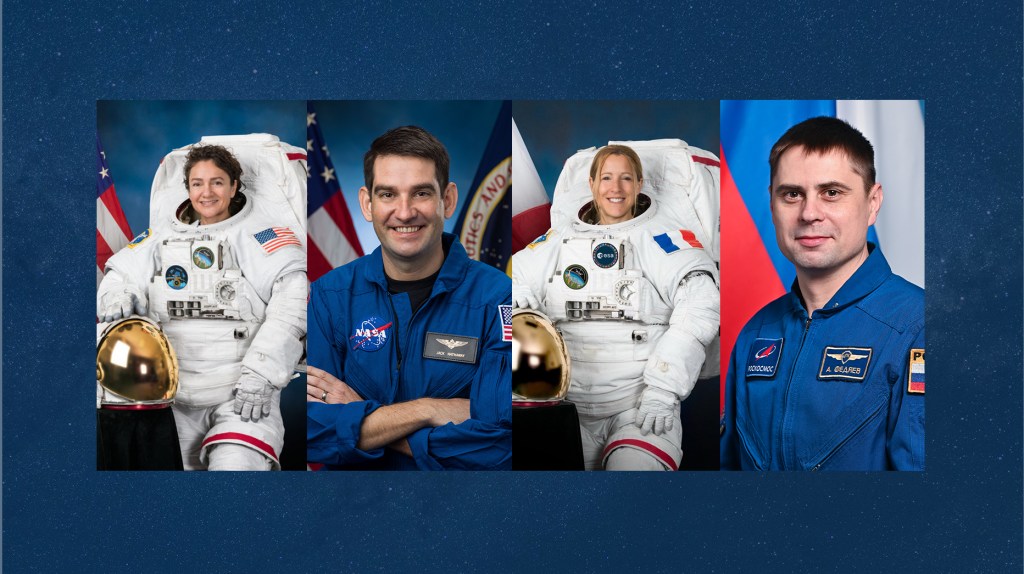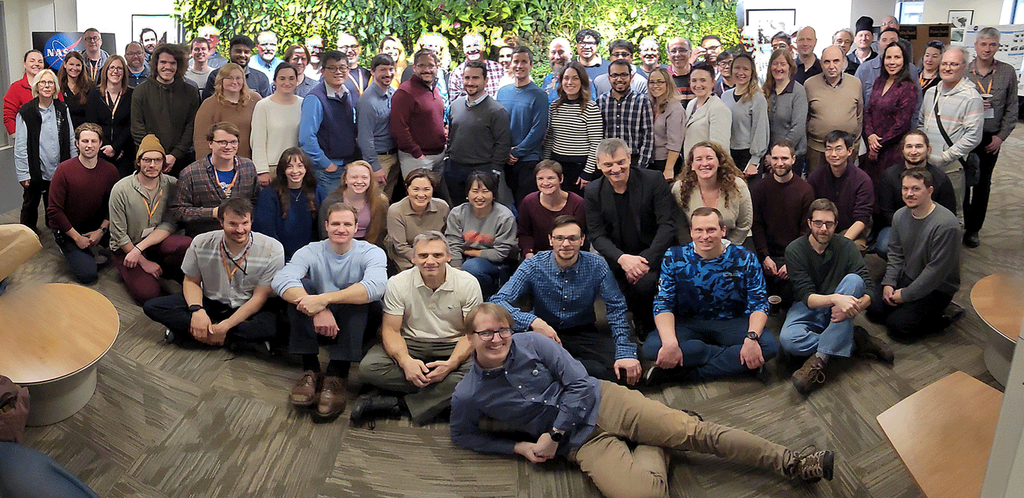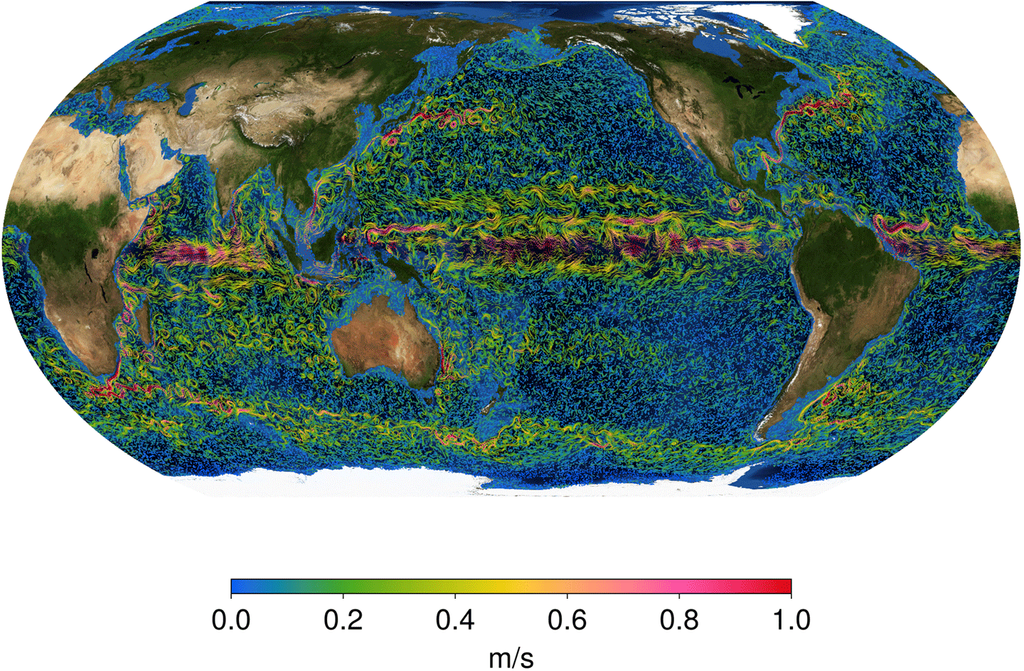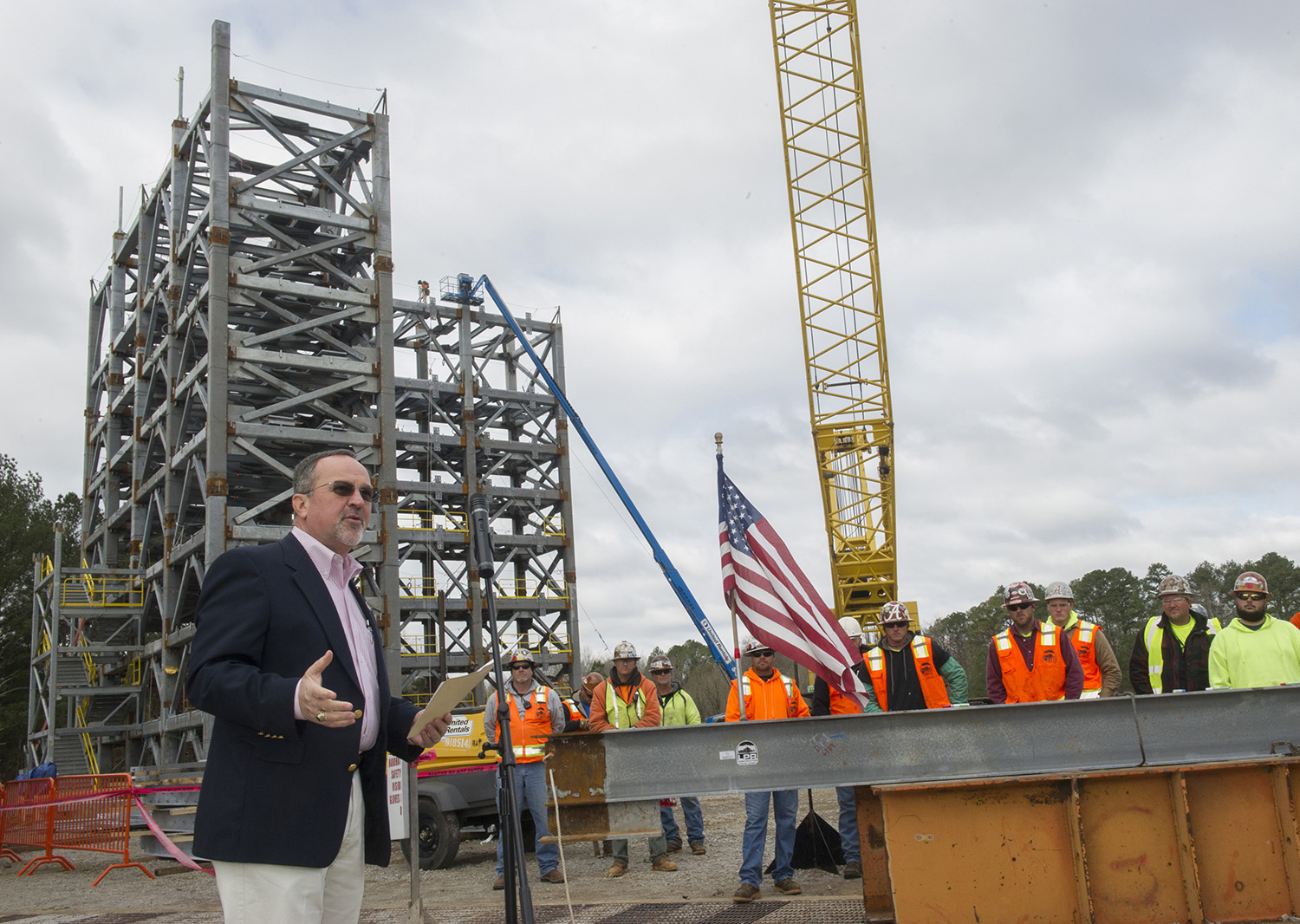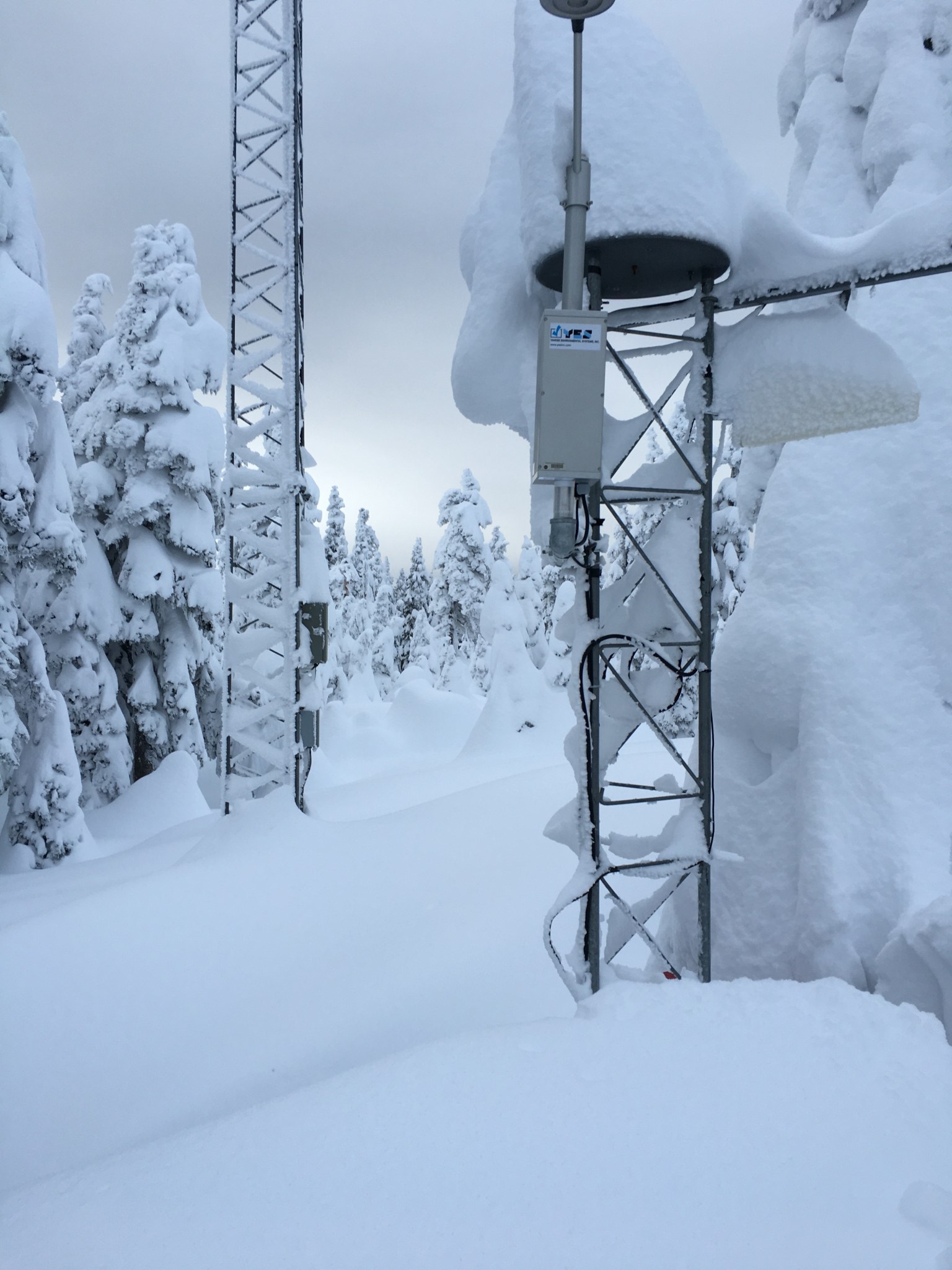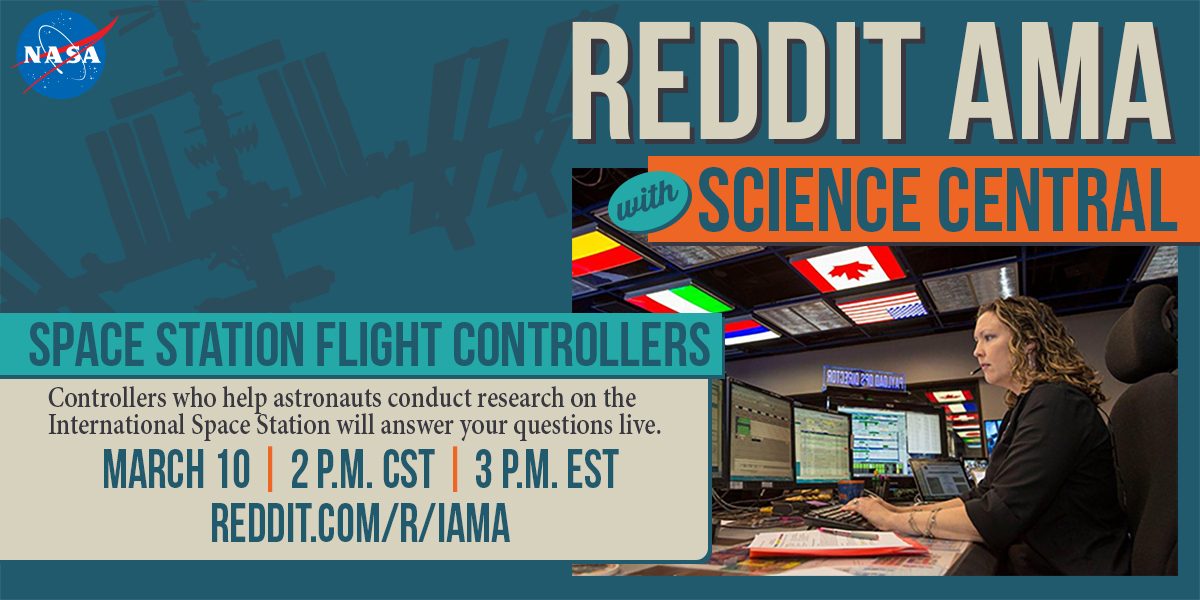In This Week’s Star
- Marshall Supports 15 Years of International Space Station Discoveries
- Crews ‘Top Out’ First of Two New SLS Test Stands at Marshall
- Final Hardware Delivered for Second SLS Booster Test
- NASA Wraps Up OLYMPEX Campaign
- Students Rev Up Their Robots at Local FIRST Robotics Event
- Airocide Air Purifier Technology: Keeping It Fresh in Space and on Earth
- Marshall to Host Reddit ‘Ask Me Anything’ with Space Station Flight Controllers in NASA’s ‘Science Mission Control’
- Cue the Bugle Calls: Team Redstone to Begin Reveille and Retreat March 14
- This Week in NASA History: STS-109 Returns to Earth After Servicing the Hubble Telescope — March 12, 2002
- Obituaries
Marshall Supports 15 Years of International Space Station Discoveries
By Bill Hubscher
In November 2000, NASA began a run of 15 years of continuous human presence in orbit on the International Space Station. Four months later, on March 8, 2001, a team at NASA’s Marshall Space Flight Center began to leave their own mark on discovery by starting around-the-clock support of scientific activities on the orbiting laboratory from the Payload Operations Integration Center.
For 15 years, the payload operations center has been the science command post for the space station. Experts in disciplines including engineering, math, science, logistics, computer programming and communications manage and monitor investigations around the clock, 365 days a year. Every day, they collaborate with astronauts and cosmonauts and hundreds of scientists around the globe.
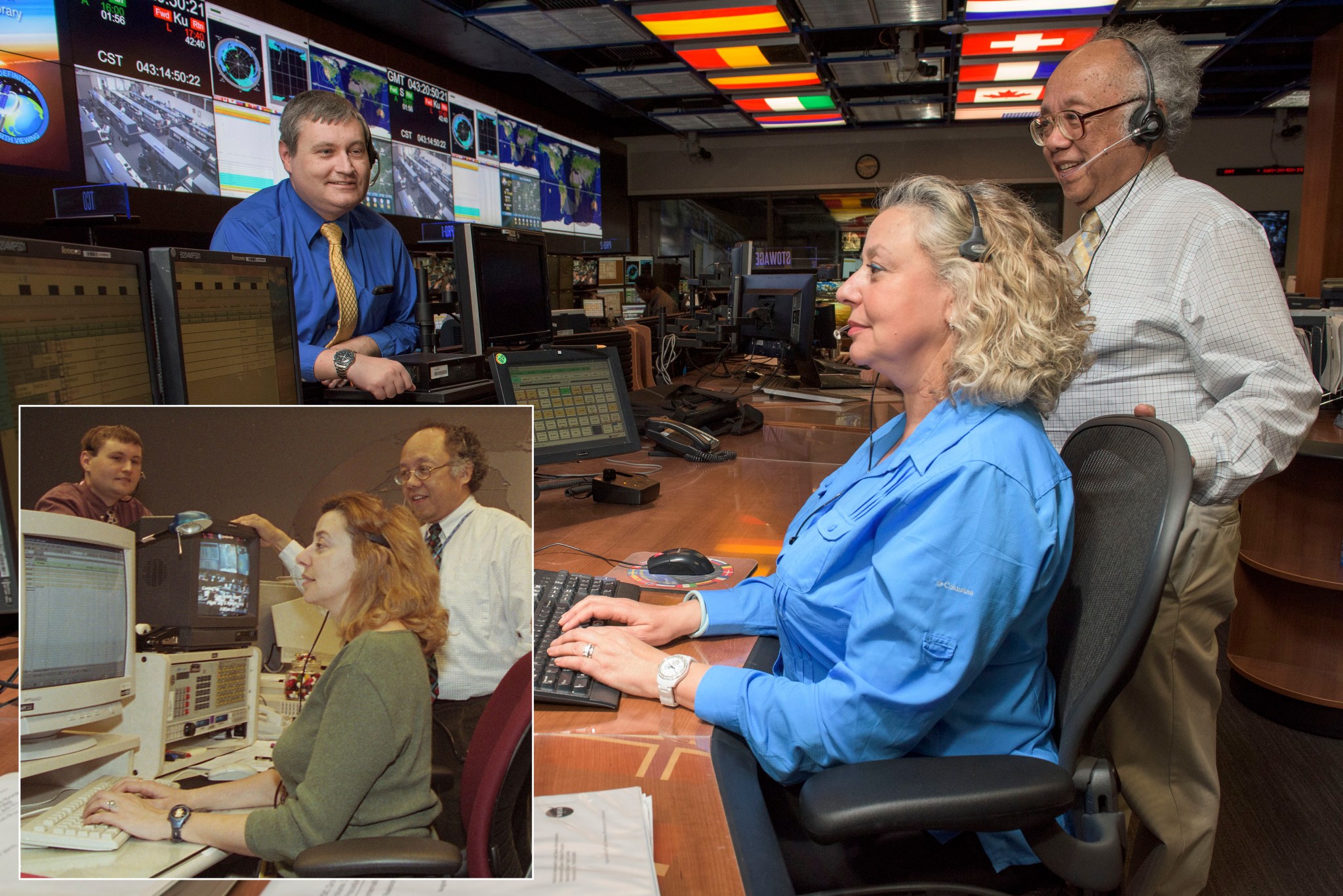
“Time in space on the world’s most unique orbiting laboratory is precious,” said Chris Cianciola, manager for payload operations and integration in Marshall’s Flight Programs and Partnerships Office. “Marshall’s team takes advantage of the latest technology and years of experience in space operations to squeeze the most science possible out of each and every space station experiment.”
Marshall has a long history of supporting science operations on both Skylab — America’s first space station — and on the space shuttle and Spacelab missions lasting up to two weeks. For the space station, supporting science investigations became an all-day, everyday task. Planning that level of support and creating the control room to help run it all required a new way of thinking.
“We planned research for NASA’s shuttle missions years in advance, but those missions were short,” said Carmen Price, one of the first payload operations directors and now the payload operations manager in Marshall’s Flight Programs and Partnerships Office. “To support space station science, we needed the same 24-hour-a-day support, but it had to be for 365 days a year — a lot longer than two weeks.”
Today, space station research continues to accelerate. Research started on the station way before assembly was complete in 2011. In the early days, there were only about 40 investigations on board. As laboratories and research facilities were added, research increased. Today, the crew collectively spends an average of 40 hours a week performing science on station and conducts about 250 investigations every six months. In the last 15 years, the Marshall team has worked with about 2,400 investigators and students from 83 countries to complete more than 1,700 investigations. When crews begin launching to the station on commercial vehicles in a few years, the amount of time dedicated to research on the station is expected to double.
Many who have staffed the consoles in support of space station science have since moved on to other positions. But a few, including Indonesian-native Aris Tanone, made a career of working with the space station crew.
In 1970, Tanone was in his first year at Gadjah Mada University in Yoyakarta, Indonesia, when he read about the space race and Wernher von Braun. At the time, it was just a dream to work in the space industry. Tanone made it a reality when — 30 years later — he joined the payload operations team as a payload rack officer monitoring and configuring the resources for individual experiments from the ground.
“There is an Indonesian saying, ‘The mountain won’t run away when you chase it,’ which means, be patient in chasing your dream,” said Tanone. “My family thought I was throwing away a good career in computers and optics by chasing this dream. But how could I turn down the chance to be part of NASA history at the same facility Dr. von Braun helped create?”
In fact, the payload operations center where Tanone works is in a building used for Saturn V mission operations and later for space shuttle operations. Tanone achieved his dream and will end his career of supporting NASA when he retires at the end of March. Tanone and his co-workers can be proud that over 1,800 scientific papers and products have been published on space station research and on supporting the completion of more than 400 experiments during astronaut Scott Kelly’s year in space on the space station. Discoveries cover a wide range of disciplines and include research that benefits both people on Earth and future explorers.
Hubscher, an ASRC Federal/Analytical Services employee, supports the Office of Strategic Analysis & Communications.
Crews ‘Top Out’ First of Two New SLS Test Stands at Marshall
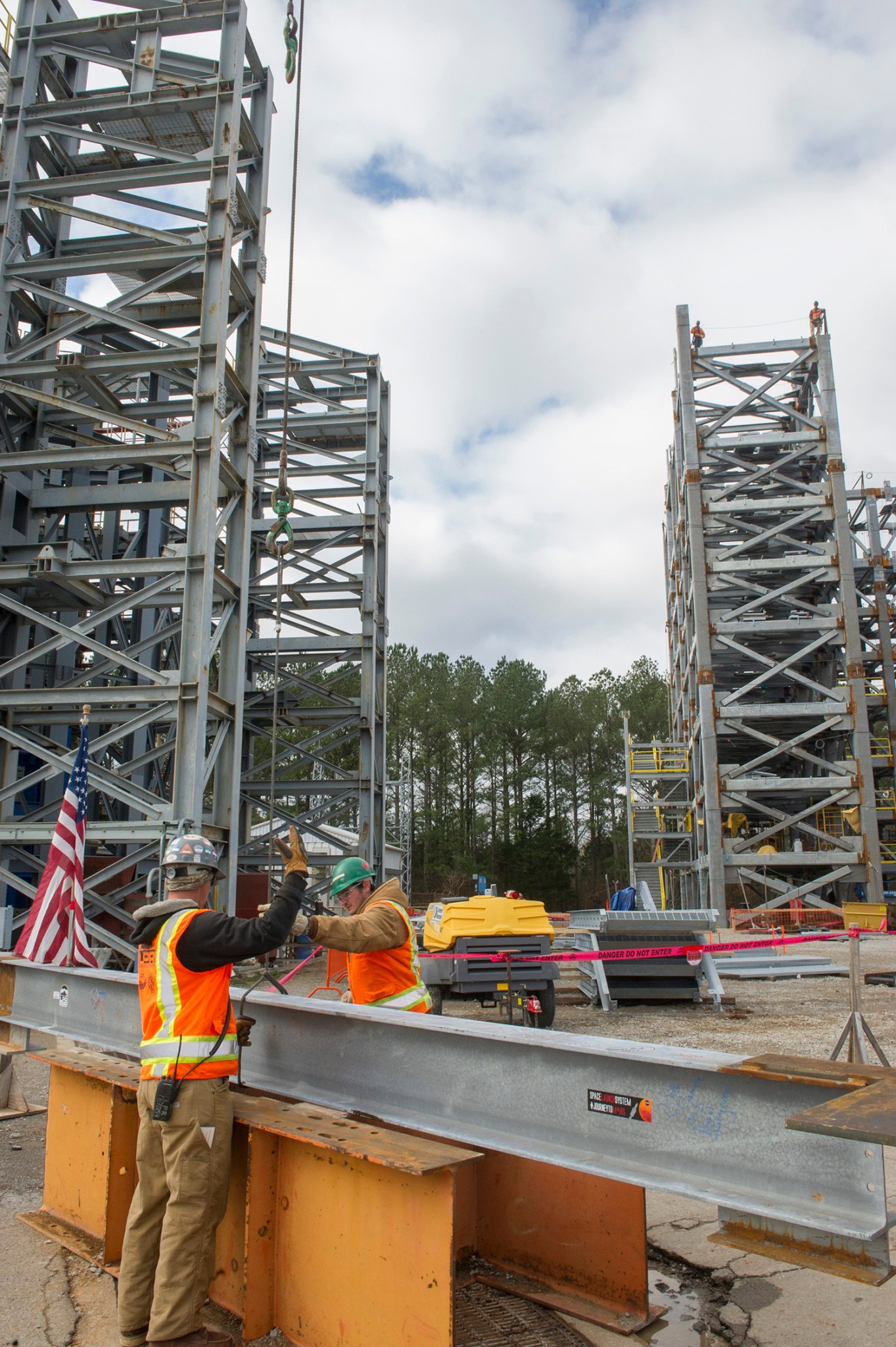
On March 4, crew members readied a 900-pound steel beam to “top out” Test Stand 4697, which is under construction to test the Space Launch System liquid oxygen tank at NASA’s Marshall Space Flight Center. “Topping out” is a builders’ rite traditionally held when the last beam is placed on top of a structure during its construction. The 85-foot-tall test stand will use hydraulic cylinders to subject the liquid oxygen tank and hardware of the massive SLS core stage to the same loads and stresses it will endure during a launch. The tests will also verify the models already in place that predict the amount of loads the core stage can withstand during launch and ascent. Prime contractor Brasfield & Gorrie of Birmingham, Alabama, and several of its subcontractors are constructing Test Stand 4697 and Test Stand 4693, which will have a twin-tower configuration and conduct similar structural tests on the SLS core stage’s liquid hydrogen tank. Both stands are scheduled to be completed this year. SLS will be the world’s most powerful rocket and carry astronauts in NASA’s Orion spacecraft on deep-space missions, including a journey to Mars. (NASA/MSFC/Emmett Given)
“Your work is critical to the journey to Mars,” said SLS Deputy Program Manager Jerry Cook to the construction crew at the “top out” ceremony for Test Stand 4697 at Marshall. (NASA/MSFC/Emmett Given)
Final Hardware Delivered for Second SLS Booster Test

The fifth and final segment for a full-scale test version of NASA’s Space Launch System booster was delivered March 2 to Orbital ATK’s Promontory, Utah, test site. The aft — or rear — segment will be assembled with the other four segments, currently at the test stand, and outfitted for a second booster qualification ground test this summer. The test will measure the booster’s performance at a cold motor conditioning target of 40 degrees and also demonstrate that it meets applicable ballistic requirements. NASA successfully completed the first booster qualification test in March 2015. The two full-scale tests provide crucial data to support booster qualification for the first two flights of SLS with NASA’s Orion spacecraft. When completed, two five-segment boosters and four RS-25 main engines will power SLS, with Orion atop, on deep-space missions, including to an asteroid and ultimately to Mars. The solid rocket boosters — measuring 177 feet long and producing 3.6 million pounds of thrust — operate in parallel with the main engines for the first two minutes of flight. The boosters provide more than 75 percent of the thrust needed for the launch vehicle to escape the gravitational pull of Earth. Orbital ATK is prime contractor for the SLS boosters. (Orbital ATK)
NASA Wraps Up OLYMPEX Campaign
It takes a team to do great science. Take the Olympic Mountain Experiment, or OLYMPEX, field campaign, for example. A team of scientists, including many from NASA’s Marshall Space Flight Center, worked to unravel the complex physics of rain and snowfall production in clouds, connect those physics to what satellite-based remote sensors observe, and evaluate how well satellites measure rain and snowfall from space.
In February, NASA finished its intensive airborne and ground-based OLYMPEX field campaign studying extreme rain and snow over the complex oceanic and mountainous region of the Olympic Peninsula in Washington. The OLYMPEX campaign was designed and led by the NASA Global Precipitation Measurement Mission Ground Validation Program to assess satellite measurements made by the GPM Core Observatory, a joint mission led by NASA and the Japan Aerospace Exploration Agency, which launched in late February 2014.
“I’m fairly confident in saying that the OLYMPEX field campaign is one of the best that we’ve done yet, bar none,” said Walt Petersen, a deputy project scientist for GPM and lead for GPM ground validation. “It was a very nice way to finish off our major ground validation field campaigns for GPM, and we really just nailed it with OLYMPEX.”
During the campaign, NASA and its partners gathered precipitation data through both ground and airborne instruments over the Pacific Northwest. They measured an abundance and variety of precipitation including light rain over the oceans, flooding rain over the mountains and coast, and heavy snowfall in the coastal mountains and forest. The data collected provides crucial information to improve the GPM satellite mission’s measurements of light rain and snow, as well as help researchers understand how precipitation changes as it moves across the ocean onto land and up the mountains.
“The measurements we collected from aircraft flying in stacked patterns over ground-based radars and precipitation gauges lets us connect the dots between what we see from space, what happens in the clouds and what we measure on the ground,” said Petersen.
Collecting measurements from three unique perspectives helped the science team understand the fundamental processes within clouds that cause different types of rain to form. OLYMPEX collected information with airborne measurements viewing clouds from the satellite vantage point downward, aircraft measurements of precipitation inside the clouds, and the ground-based radar perspective looking upward.
The Pacific Northwest was chosen because of its frequent and persistent winter rain and snowfall. On average 100 to 180 inches of precipitation fall a year, making it one of the few rainforests in the world outside of the tropics.
“From November to January, we had 10 feet of rain in some locations. That’s an incredible amount,” said Petersen. “That’s over twice the total amount that falls over the Huntsville area in one year.”
Marshall’s Earth Science Office support for the OLYMPEX campaign included contributions to field campaign leadership, aircraft- and ground-based instrument deployments, mission science coordination for flight operations and experiment data management.
To learn more about the team’s experiences on the campaign, visit their “Notes from the Field” blog.
For more information about OLYMPEX, click here
Students Rev Up Their Robots at Local FIRST Robotics Event
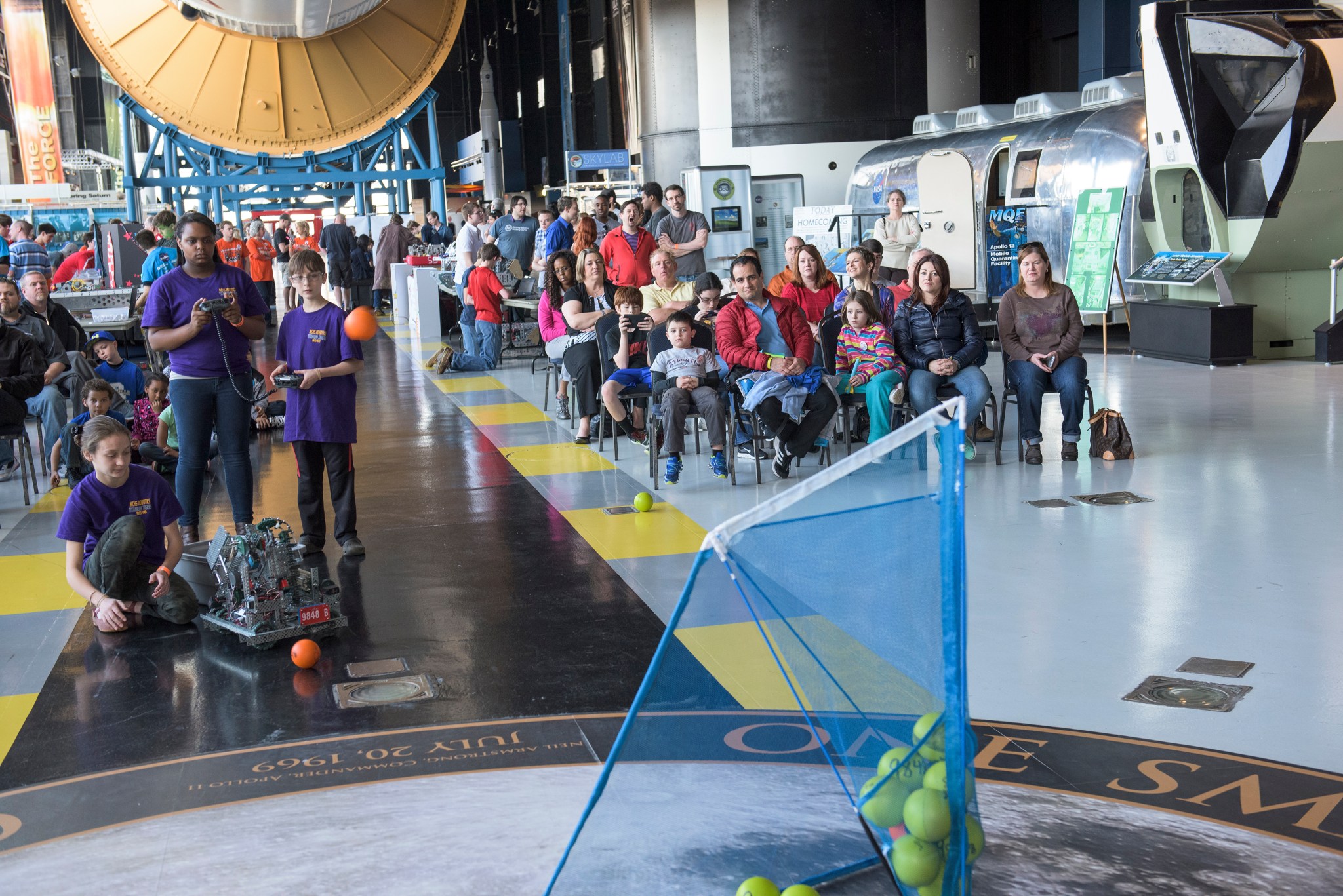
Cheering crowds gather to enjoy robotic demonstrations by student teams from schools across Alabama, Tennessee and Mississippi at the 2016 “Robots to Rocket City” event March 6, at the U.S. Space & Rocket Center. The practice session was part of FIRST Robotics, a national competition to encourage students to pursue careers in science and technical fields. This year’s game, “FIRST Stronghold,” is a medieval-themed battle for robots to storm castles, breach defenses, launch foam boulders and capture opposing towers. Local schools participating included The Mad Rockers, with students from Bob Jones and James Clemens high schools in Madison, Alabama; Morgan County Mech Tech, comprised of students from A.P. Brewer, Priceville, Danville, Falkville and West Morgan high schools in Morgan County, Alabama; and Team G.R.E.A.T. from Grissom High School in Huntsville. The event is a prelude to Alabama’s inaugural FIRST regional competition, “FRC Rocket City Regional,” to be held at the Von Braun Center March 23-26. Each competition gives teams a chance to qualify for a spot at the national competition in St. Louis April 27-30. Sponsors for this year’s Robots to Rocket City were NASA’s Marshall Space Flight Center, the National Space Club of Huntsville and the U.S. Space & Rocket Center. (NASA/MSFC/Fred Deaton)
Airocide Air Purifier Technology: Keeping It Fresh in Space and on Earth
By Will Bryan
We’ve all had it happen. The bundle of bananas we swore we were going to eat darkens, softens and becomes rotten before we get to them. The cause of this ripening is due to a chemical released by the produce itself called ethylene — a colorless, odorless gas that signals fruits and vegetables to ripen and, thus, begin to decay.
Ethylene, while slightly problematic in our kitchens at home, is a bigger problem for growing plants in enclosed chambers aboard spacecraft, where the compound does not naturally dissipate as it does on Earth. If not removed from the area of the plants, ethylene will cause the plants and produce to ripen and spoil before they can be consumed. The technology developed to combat ethylene build-up in the space-based growth chambers has spun off into a technology that purifies the air for homes and businesses alike.
The solution, sponsored by NASA Marshall Space Flight Center’s Space Program Development Fund and developed by the Wisconsin Center for Space Automation and Robotics at the University of Wisconsin-Madison, is a specialized growth chamber that includes an ethylene reduction system.
The reduction system uses titanium oxide and ultraviolet light to convert the ethylene into carbon dioxide and water, which can, in turn, be used to help the plant. The scrubber-type system was developed in part because ethylene molecules are too small to be trapped by traditional filters. It made its spaceflight debut in 1995 during the STS-73 mission, aboard space shuttle Columbia. Subsequent versions have flown during several missions on the International Space Station.
The technology was brought to the commercial market by Kennesaw, Georgia-based KES Science & Technology, which after licensing the technology from the University of Wisconsin, partnered with Akida Holdings of Jacksonville, Florida. Akida Holdings markets the technology as Airocide.
The air purifier eliminates over 99.9 percent of spores and volatile organic compounds that dare enter its reaction chamber. It was even tested and determined to be effective in eliminating Anthrax spores. The eye-catching portable unit for home use, which debuted in 2013 on the Ellen DeGeneres Show, is touted as potent air purifier — powerful enough to purge an entire room of pathogens.
The technology also has been adapted for use by produce distributors, in grocery stores and in specialized refrigerators for distributing food aid to remote locations. The air purification technology enables the shelf life of perishables to be extended by up to two weeks. Wineries use the purifier to prevent mold buildup in their wine caves. Hospitals, clinics and schools also use the product because of its capability of eliminating dangerous airborne bacteria and viruses.
As NASA prepares to take the next steps on the journey to Mars, technologies like the Airocide air purifier continue to help improve life on Earth while supporting and enabling the giant leaps in the exploration of outer space that the agency and Marshall are known for.
If you believe that a technology you’ve been working on has potential to improve lives here on Earth, submit a New Technology Report.
As Terry Taylor, the manager of Marshall’s Technology Transfer Office explains, “Every year the agency makes thousands of technologies available to industry. These technologies generate revenue, create jobs, save lives and show a clear return on investment for the nation’s space program. And it all begins with the invention disclosure process.”
Bryan, an ASRC Federal/Analytical Services employee, supports the Office of the Chief Technologist.
Marshall to Host Reddit ‘Ask Me Anything’ with Space Station Flight Controllers in NASA’s ‘Science Mission Control’
By Bill Hubscher
If you have ever wondered what it is like to work with astronauts on a daily basis to make the discoveries that change our world for the better, the flight controllers in NASA’s Payload Operations Integration Center at the Marshall Space Flight Center are giving you the chance to literally ask them anything.
For 15 years, a trained team of experts in the POIC has supported science activities on the International Space Station, planning, monitoring and managing science investigations from Marshall.
On March 10, two days after the 15th anniversary of around-the-clock support of science on the orbiting laboratory, Payload Operations Directors Stephanie Dudley and Pat Patterson, Payload Communicator Samantha Harris, and Data Management Coordinator Mason Hall will answer questions during a Reddit Ask Me Anything about planning and monitoring experiments while working with astronauts in orbit.
Reddit is a popular online community where users discuss a variety of topics. The AMA subreddit features live interviews with volunteers who answer direct questions from users about their specific expertise and experiences.
Beginning at 2 p.m., the POIC flight controllers will discuss their collaboration with space station crew members and scientists around the world, making the discoveries that improve life on Earth while taking those next steps on the journey to Mars. The team will also talk about working with NASA astronaut Scott Kelly, who returned from the space station March 1 after spending nearly a year in space.
You can follow along with responses to the questions or pose one yourself at the official AMA subreddit.
Hubscher, an ASRC Federal/Analytical Services employee, supports the Office of Strategic Analysis & Communications.
Cue the Bugle Calls: Team Redstone to Begin Reveille and Retreat March 14
By Jena Rowe
Beginning March 14, Redstone Arsenal will practice the time-honored military tradition of broadcasting the reveille and retreat bugle calls over outdoor speakers located in Army areas of the installation. Reveille will take place at 6:30 a.m. and retreat will take place at 5 p.m. each day. Motorists should not stop their vehicles to render honors.
“Traditions play a significant role in the day-to-day life of our military,” said Roy Malone, director of NASA Marshall Space Flight Center’s Office of Center Operations. “For most soldiers, the day starts with reveille and ends with retreat — two ceremonies showing respect for the nation’s flag. The many veterans on the Marshall team will find this to be familiar. For others who have not served, it’s much like standing for the national anthem at a sporting event.”
The bugle calls — dating back to approximately the 1800s — were originally used to signal soldiers when to rise for duty and when to retire to their quarters. Today, they are often associated with honoring the American flag, providing those who work and live on military installations with the opportunity to pay respect to the flag every day.
“Respecting this tradition and honoring this flag is about recognizing the sacrifices it represents,” said Malone. “As a part of Team Redstone, I urge all Marshall team members who hear the bugle call to take the opportunity to show their respect.”
What should you do when you hear the bugle calls?
- If outdoors, military personnel and veterans should stand at attention and salute.
- If outdoors, civilians should stand at attention and place their right hand over their heart.
- Due to the potential safety hazards, motorists should not stop their vehicle to render honors.
Rowe, an ASRC Federal/Analytical Services employee, supports the Office of Strategic Analysis & Communications.
This Week in NASA History: STS-109 Returns to Earth After Servicing the Hubble Telescope — March 12, 2002
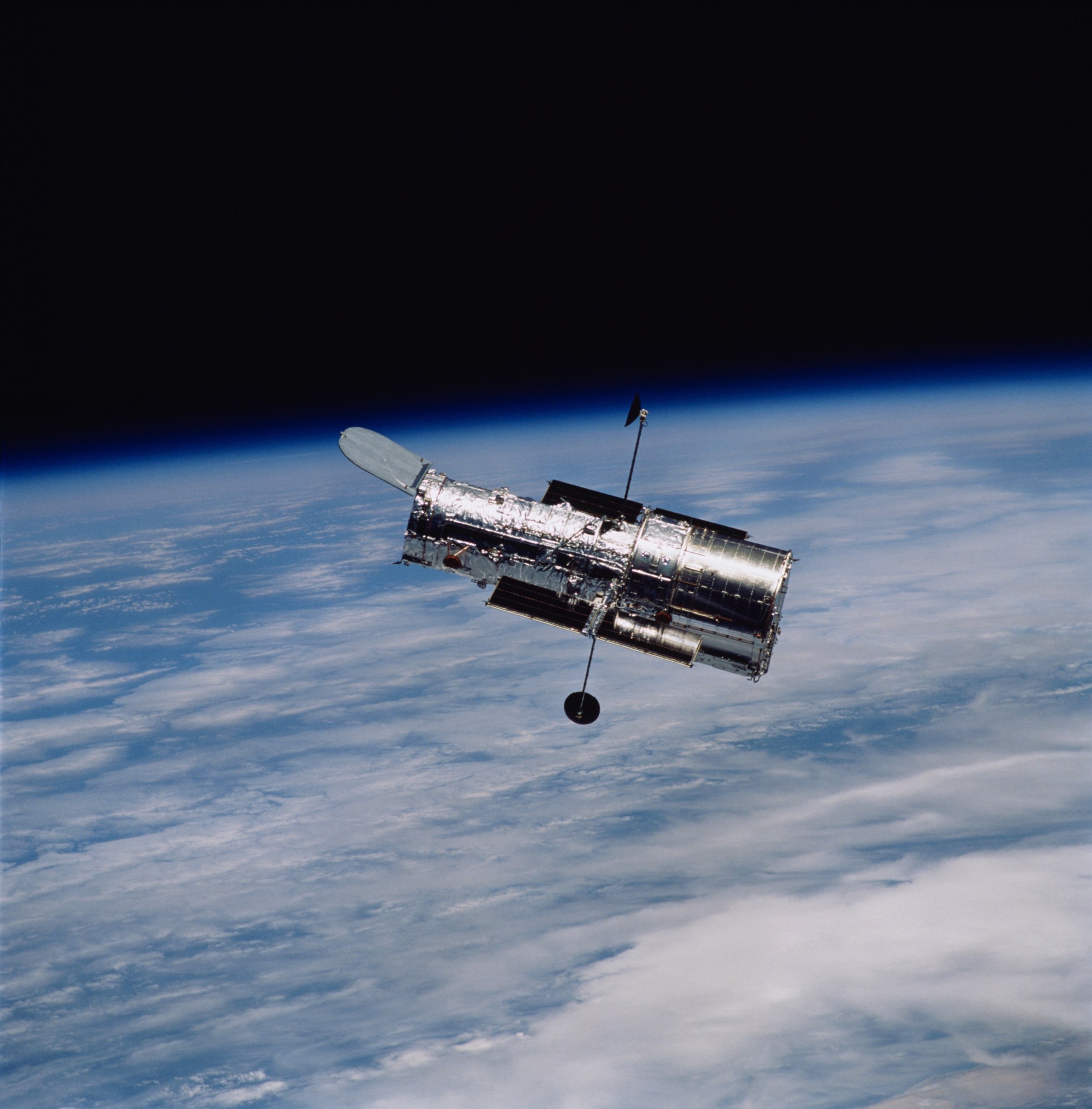
This week in 2002, STS-109, the fourth Hubble Telescope servicing mission, returned to Earth after the crew performed five spacewalks to install solar arrays, a camera, a power control unit, a reaction wheel assembly and an experimental cooling system. NASA’s Marshall Space Flight Center designed, developed and built the telescope, which launched and was deployed in April 1990. The NASA History Program documents and preserves NASA’s remarkable history through a variety of products — photos, press kits, press releases, mission transcripts and administrators’ speeches. For more pictures like this one and to connect to NASA’s history, visit the History Program’s Web page. (NASA)
Obituaries
Michael C. Wright, 55, of Huntsville, died Feb. 22. He began working as an aerospace engineer in 1989 at the Marshall Center, where he was still employed at the time of his death. He is survived by his wife, Melinda Wright.
Marietta Henderson, 79, of Fayetteville, Tennessee, died Feb. 28. She retired from the Marshall Center in 1995 as an office automation assistant.
Richard Beranek, 75, of Guntersville, Alabama, died March 2. He retired from the Marshall Center in 2006 as an aerospace engineer.
Connie S. McDaniel, 75, of Frankewing, Tennessee, died March 2. She retired from the Marshall Center in 2001 as a management support assistant.







